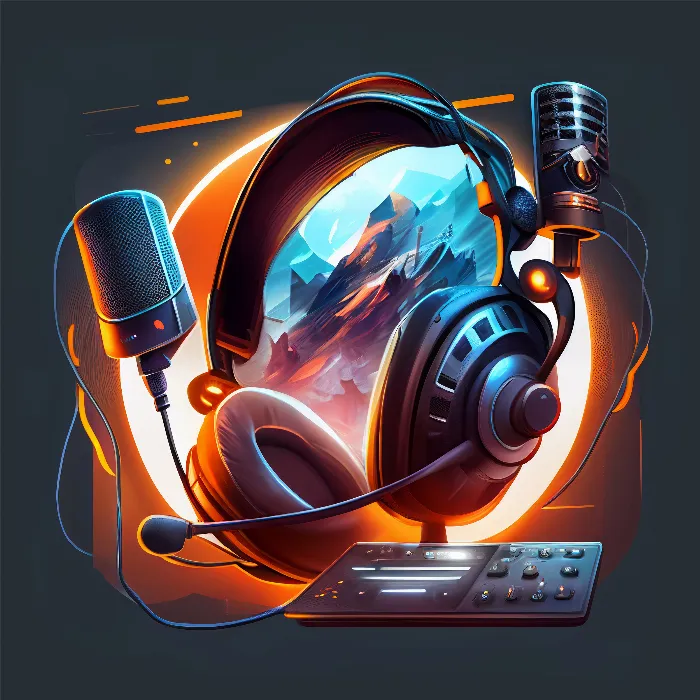In this tutorial, you will learn how to successfully set up your livestream on YouTube and use the right tags along the way. Tags are a crucial part to reach your audience and increase the visibility of your stream. The guide will help you understand and implement all the necessary steps easily.
Main Insights
- Using tags in your livestream is crucial for better discoverability.
- You can use up to 500 characters for tags to integrate relevant keywords.
- Setting up the stream as "public", "unlisted", or "private" is important for visibility.
- You have numerous options to customize your livestream, including interaction in the live chat.
Step-by-Step Guide
Step 1: Create a Playlist
The first thing you need to do is create a playlist for your livestreams. Scroll down and click on the "Playlist" option. Here, you can either choose an existing playlist or create a new one.
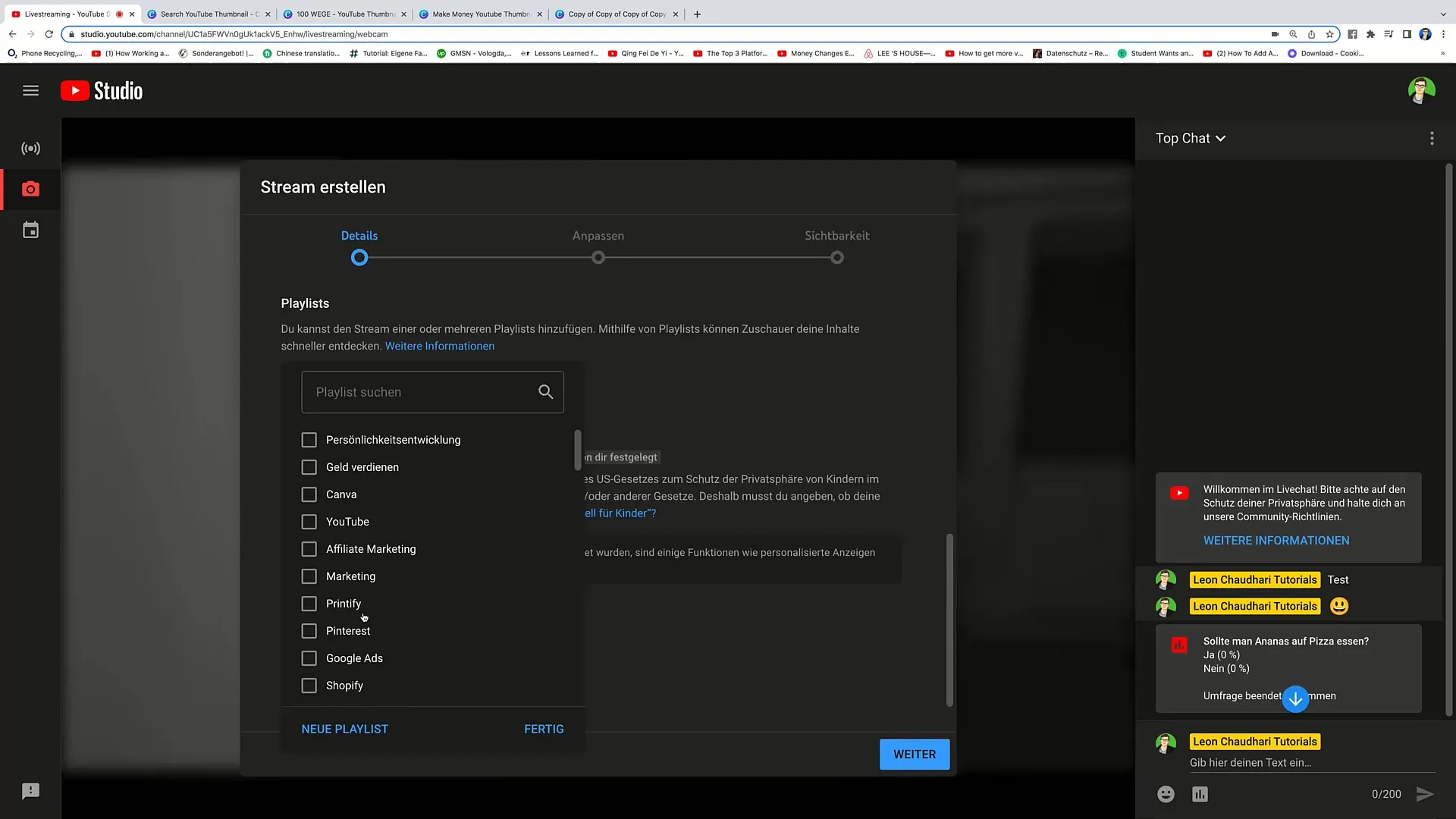
Give your new playlist a name, for example, "Livestreams," and click "Create." This will create your playlist, ensuring that all future livestreams are collected there.
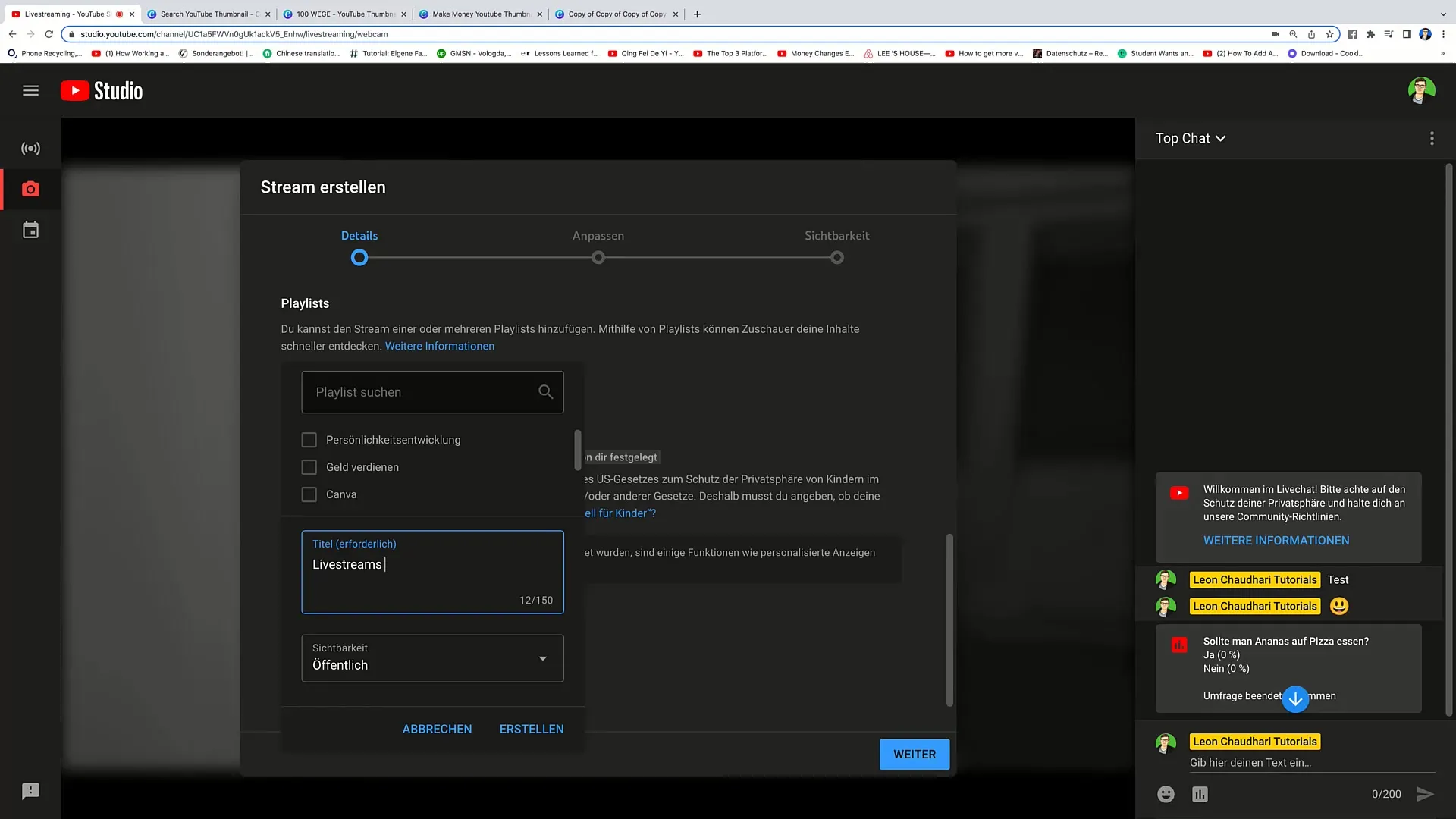
Step 2: Age Restriction and Monetization
Now go to the settings and answer whether your video is specifically made for children. In this case, you can click "No" unless your content is solely directed at kids. Keep in mind that children's content in the USA cannot be monetized.
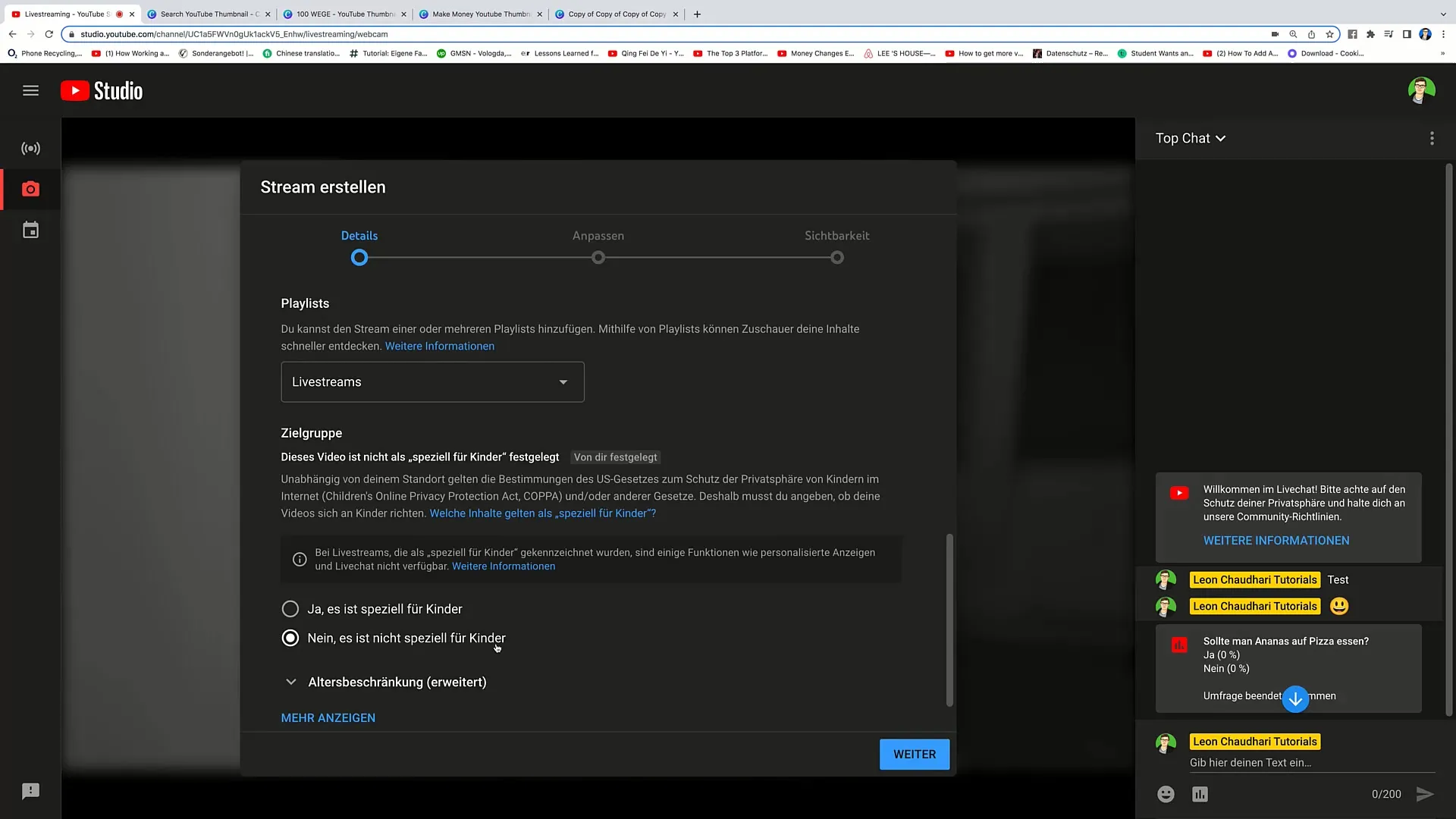
You also have the option to select additional options, such as "This stream contains paid promotions." Check the relevant boxes if applicable.
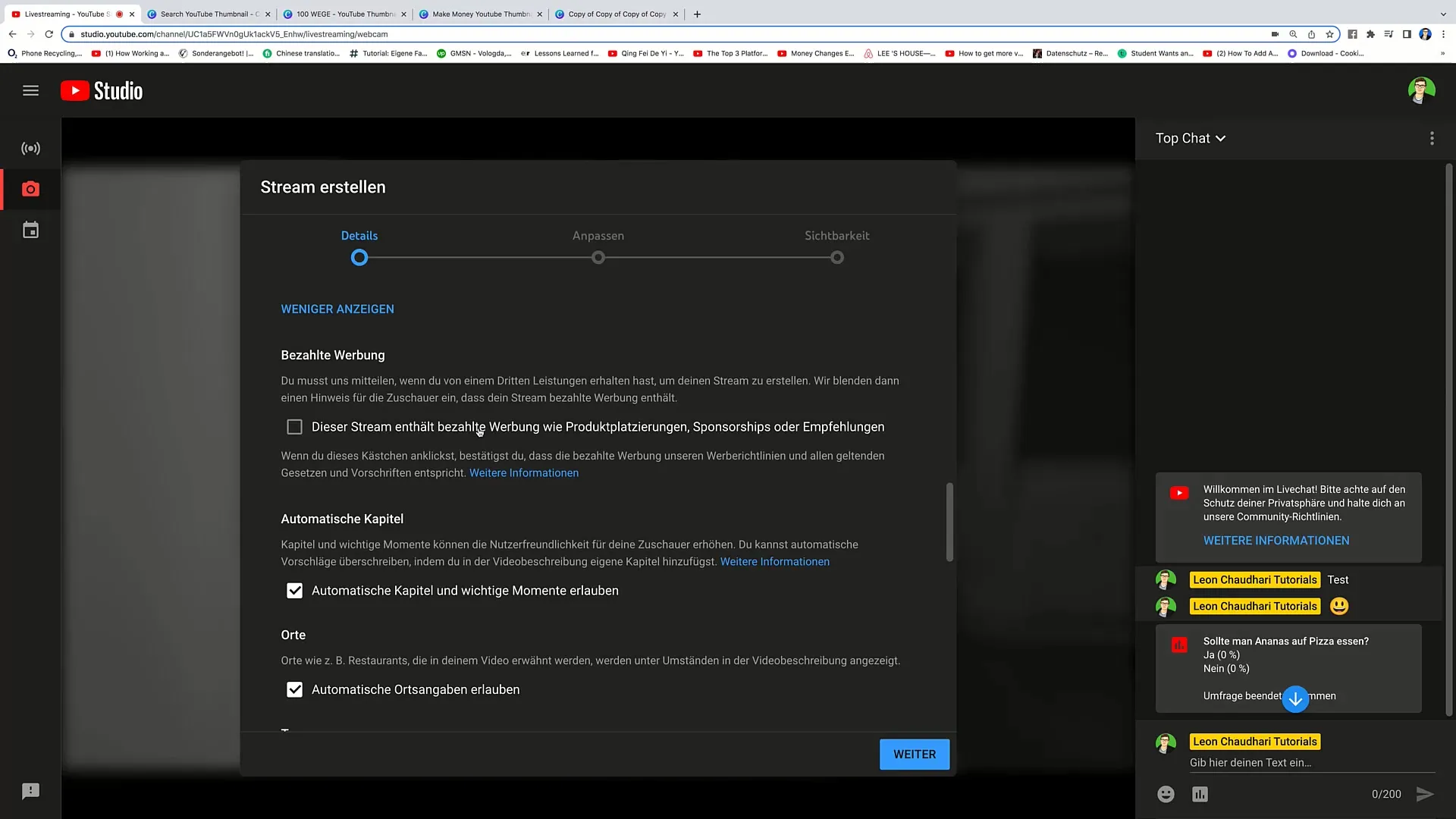
Step 3: Automatic Chapters and Tags
Enable the option for automatic chapters. This feature allows YouTube to divide your livestream into smaller, more manageable chapters based on your content structure.
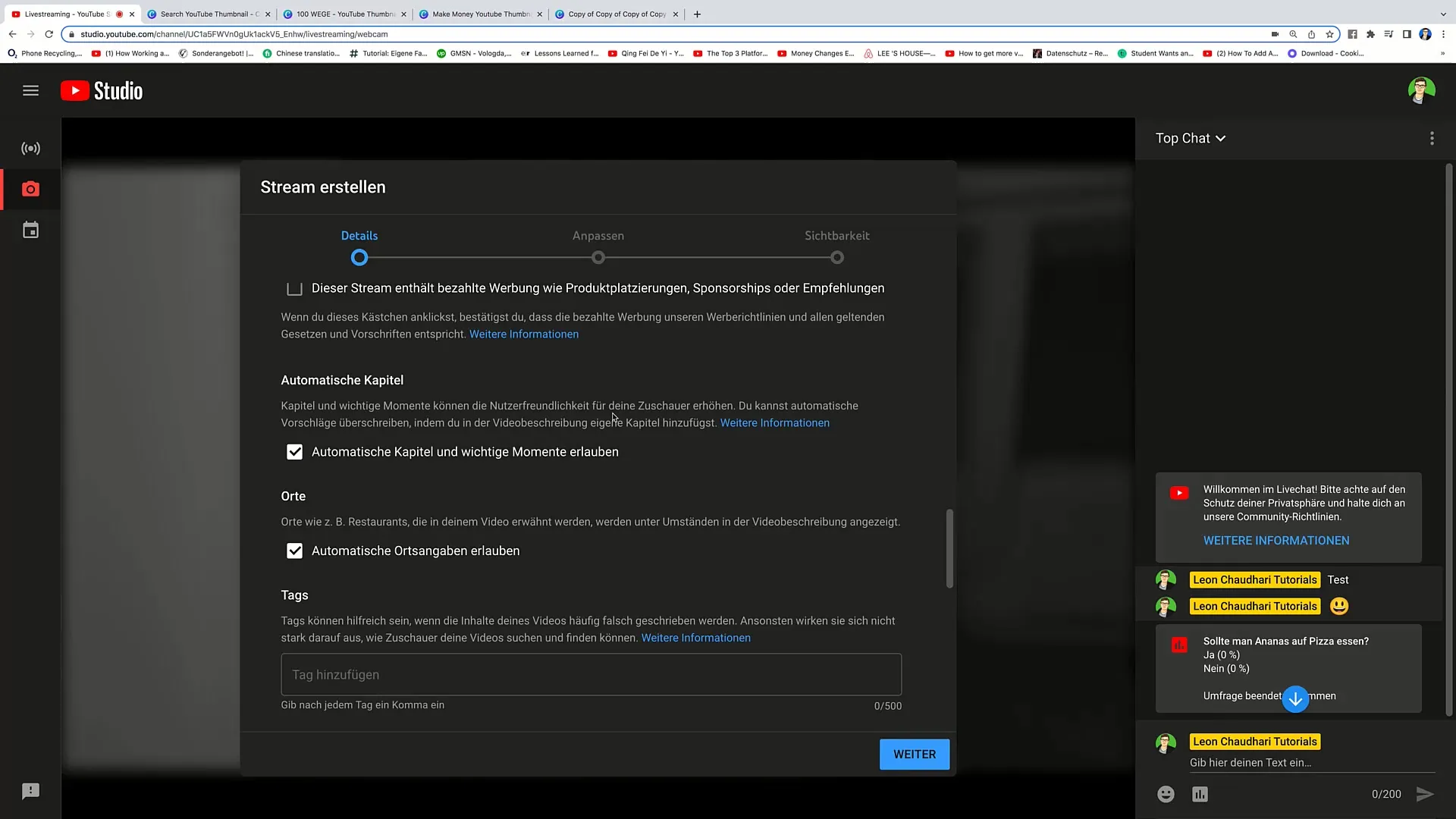
Now onto the tags. Go to YouTube and enter relevant keywords in the search bar, such as "earn money." Note down related keywords that are shown.
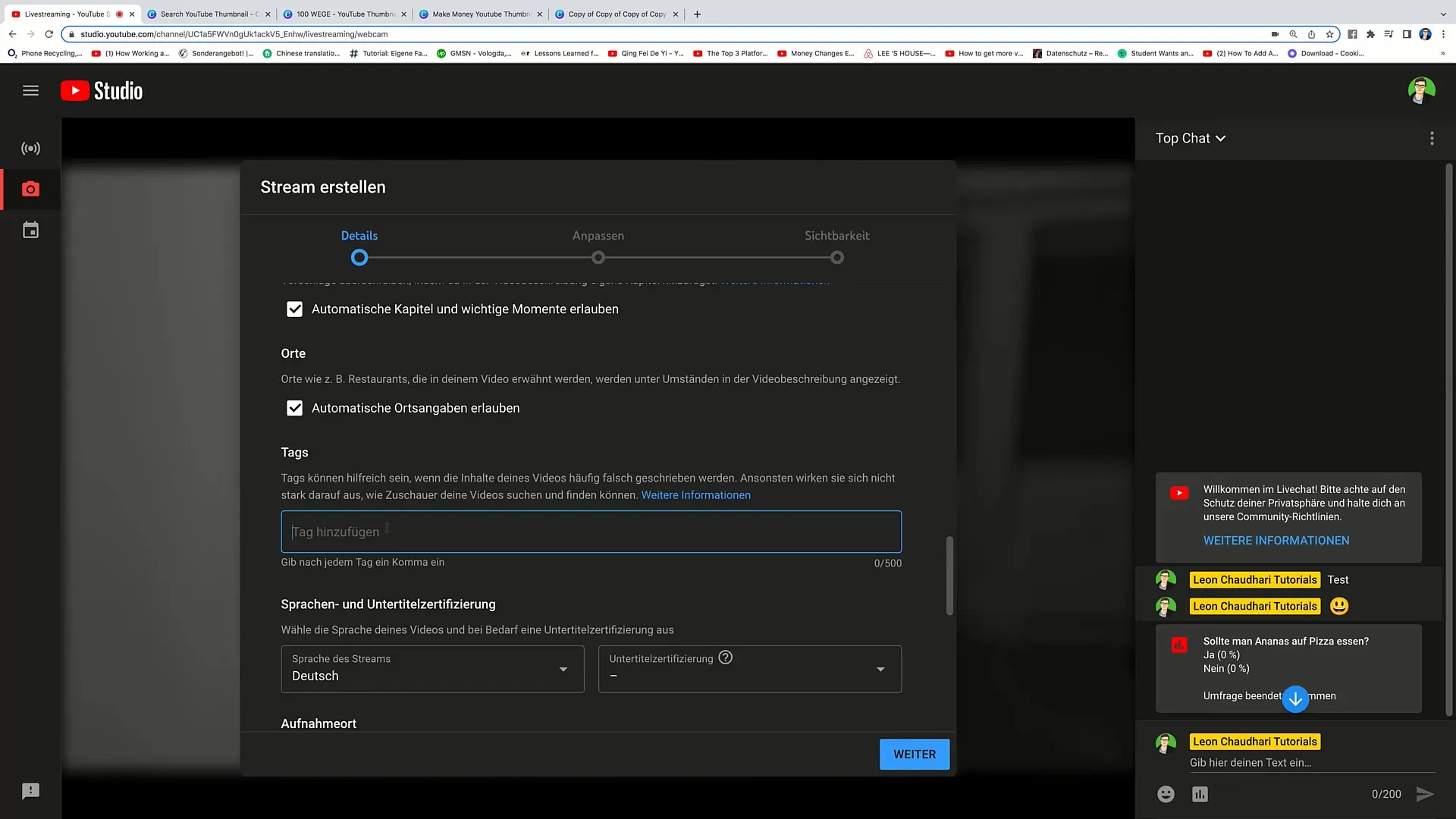
You can use up to 500 characters for tags. Fill this field with as many relevant keywords as possible to improve the discoverability of your livestream.
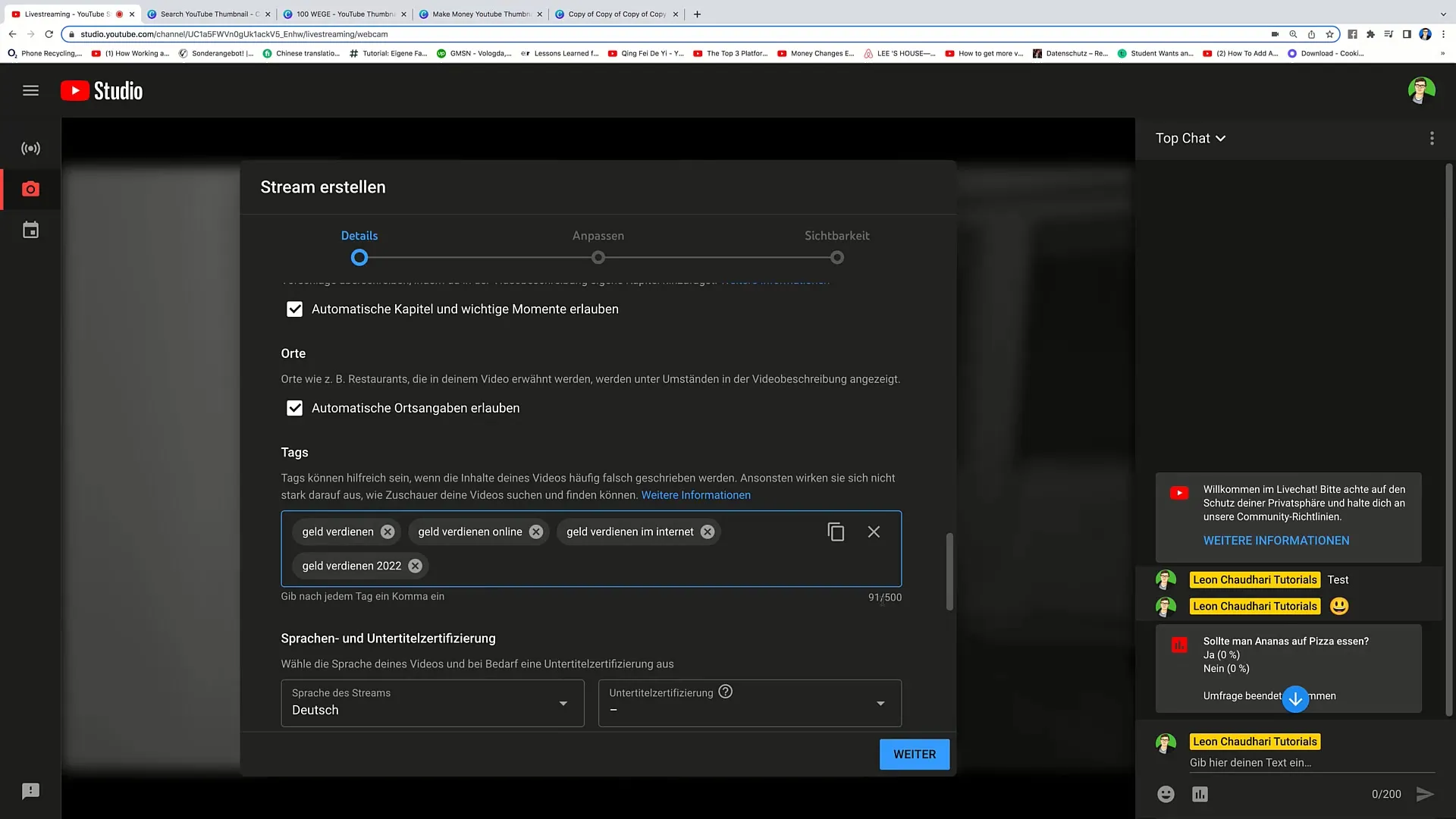
Step 4: Additional Settings
In the following steps, you can choose the language of the stream and select licensing options. Usually, you would choose the standard license.
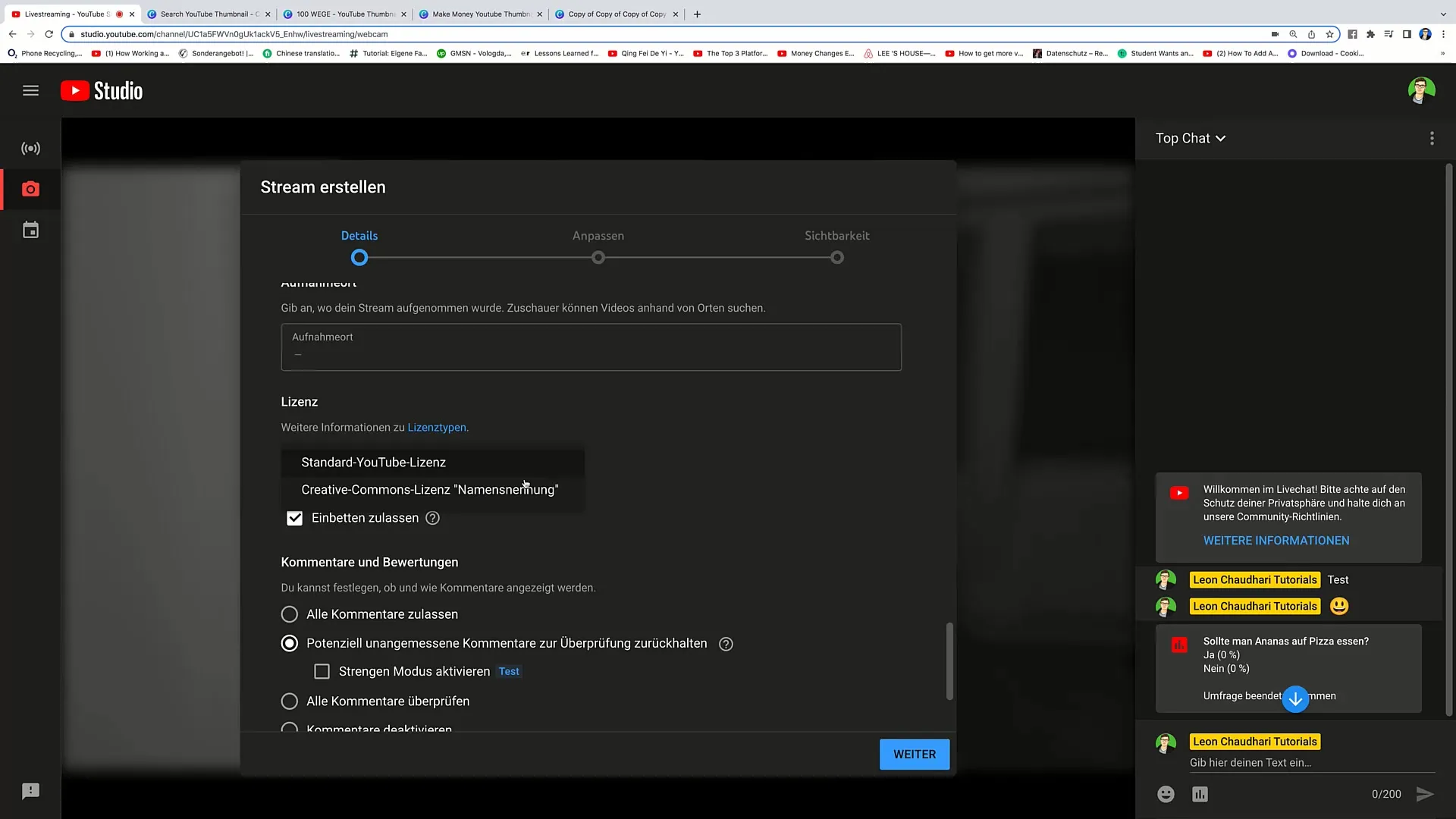
Also, decide how to handle comments. For instance, you can withhold inappropriate comments or activate a stricter mode if necessary.
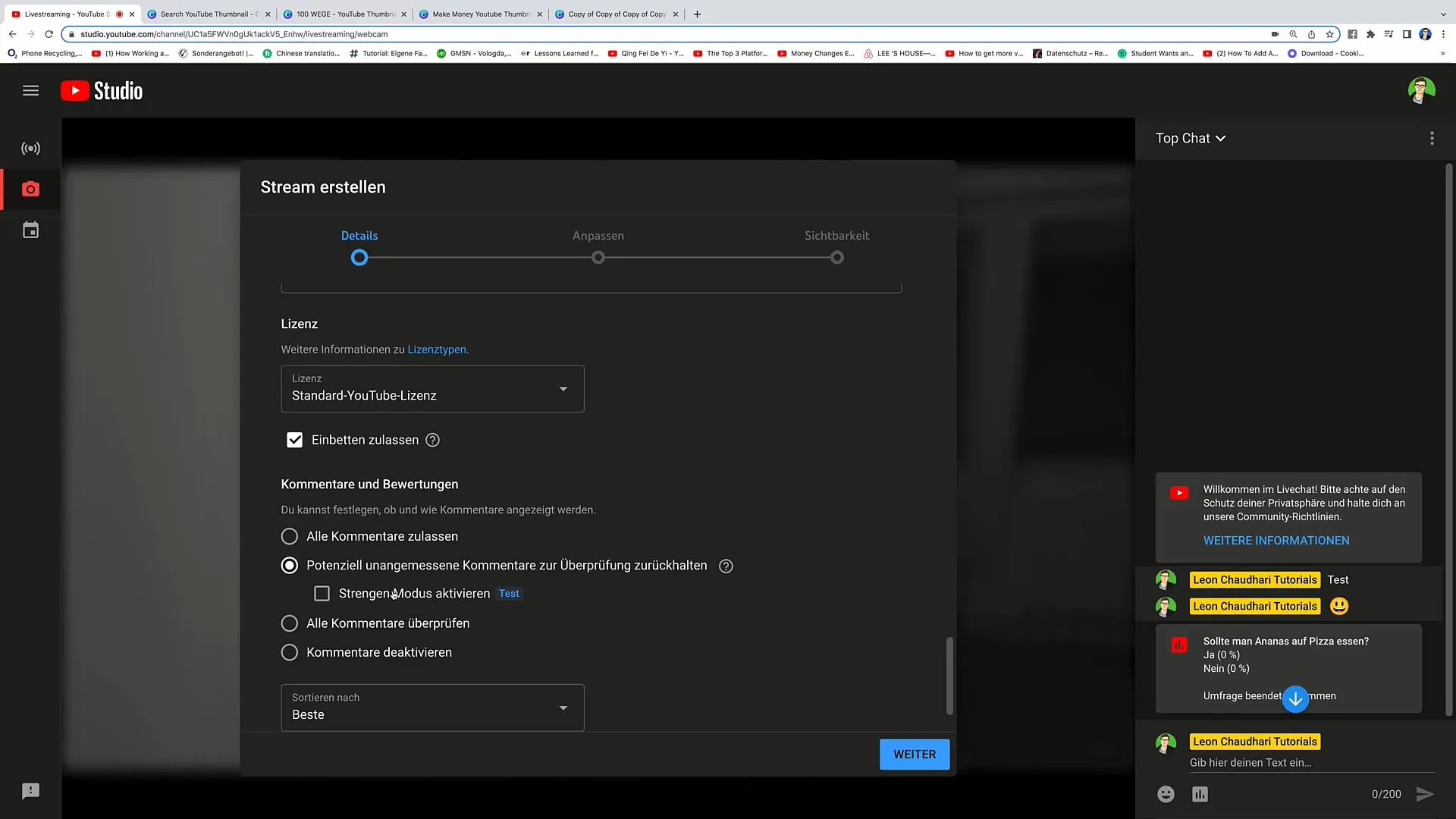
Step 5: Live Chat and Participant Modes
Now go to the Live Chat settings. You want viewers to interact, so enable the option to display the Live Chat during the stream.
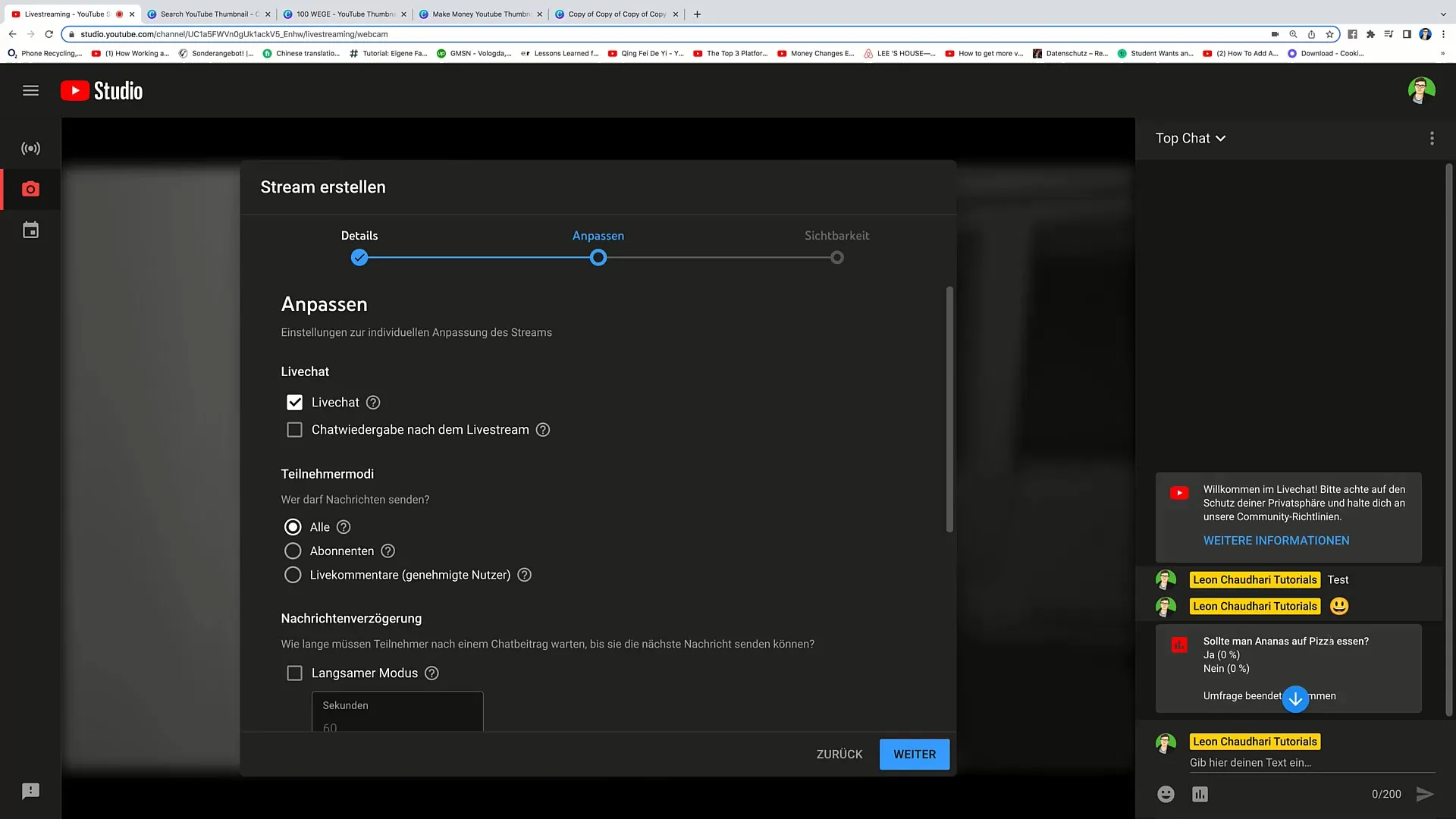
You can also customize the participant modes to define who should be able to send messages. Choose the option "All" or restrict it to subscribers.
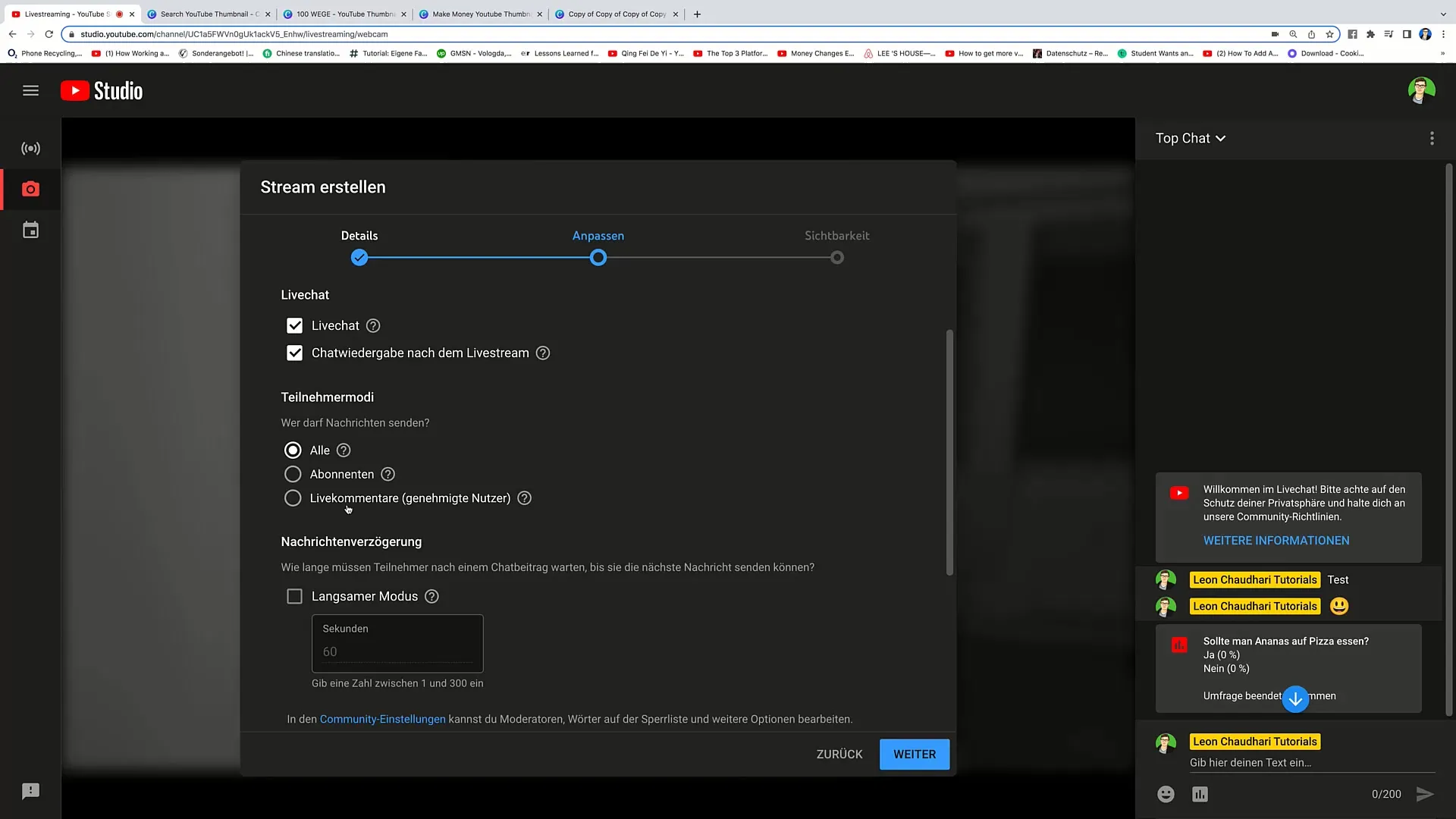
Step 6: Stream Time and Visibility
Now you can set the time and date for your livestream. You have the options to stream publicly, unlisted, or privately. Decide how you want to make your livestream accessible to your audience.
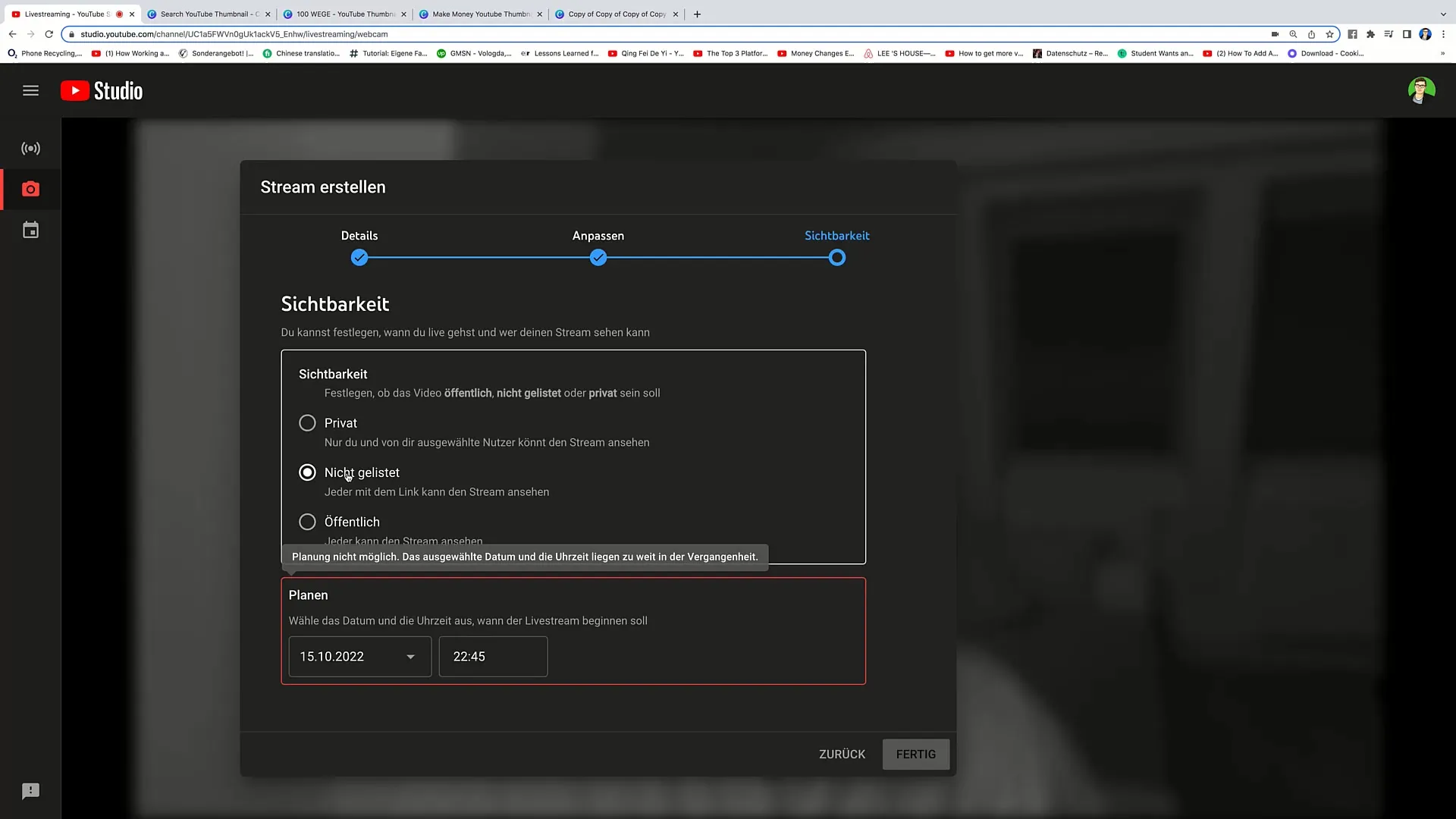
Step 7: Choose Camera and Microphone
Now choose the camera and microphone you want to use for your livestream. Make sure everything is set up correctly before you finally start the stream.
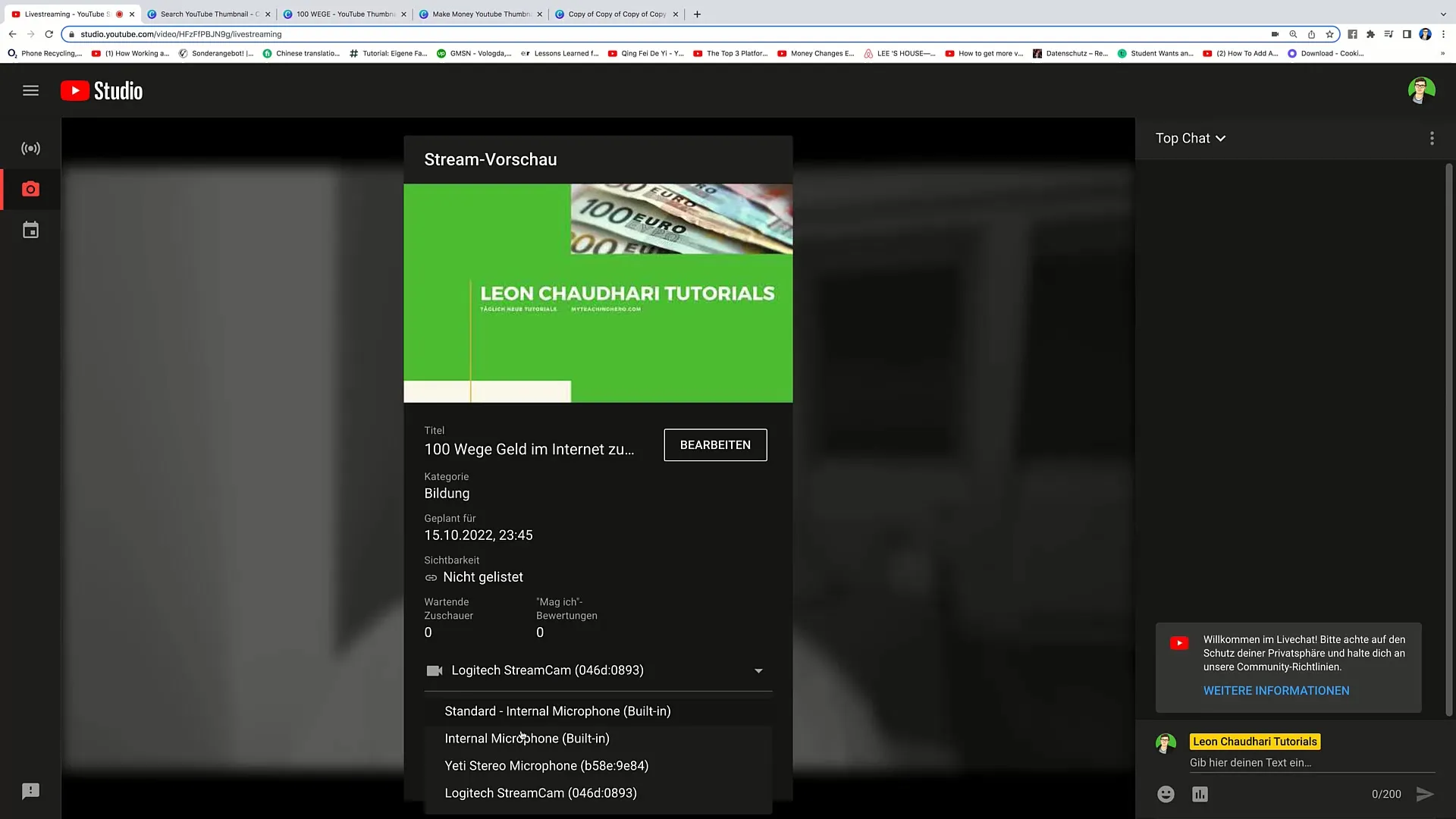
Step 8: Start Livestream
When everything is ready, simply click on "Start Livestream". A countdown will appear, and soon you will be live. Viewers can now leave comments in the chat and interact with you.
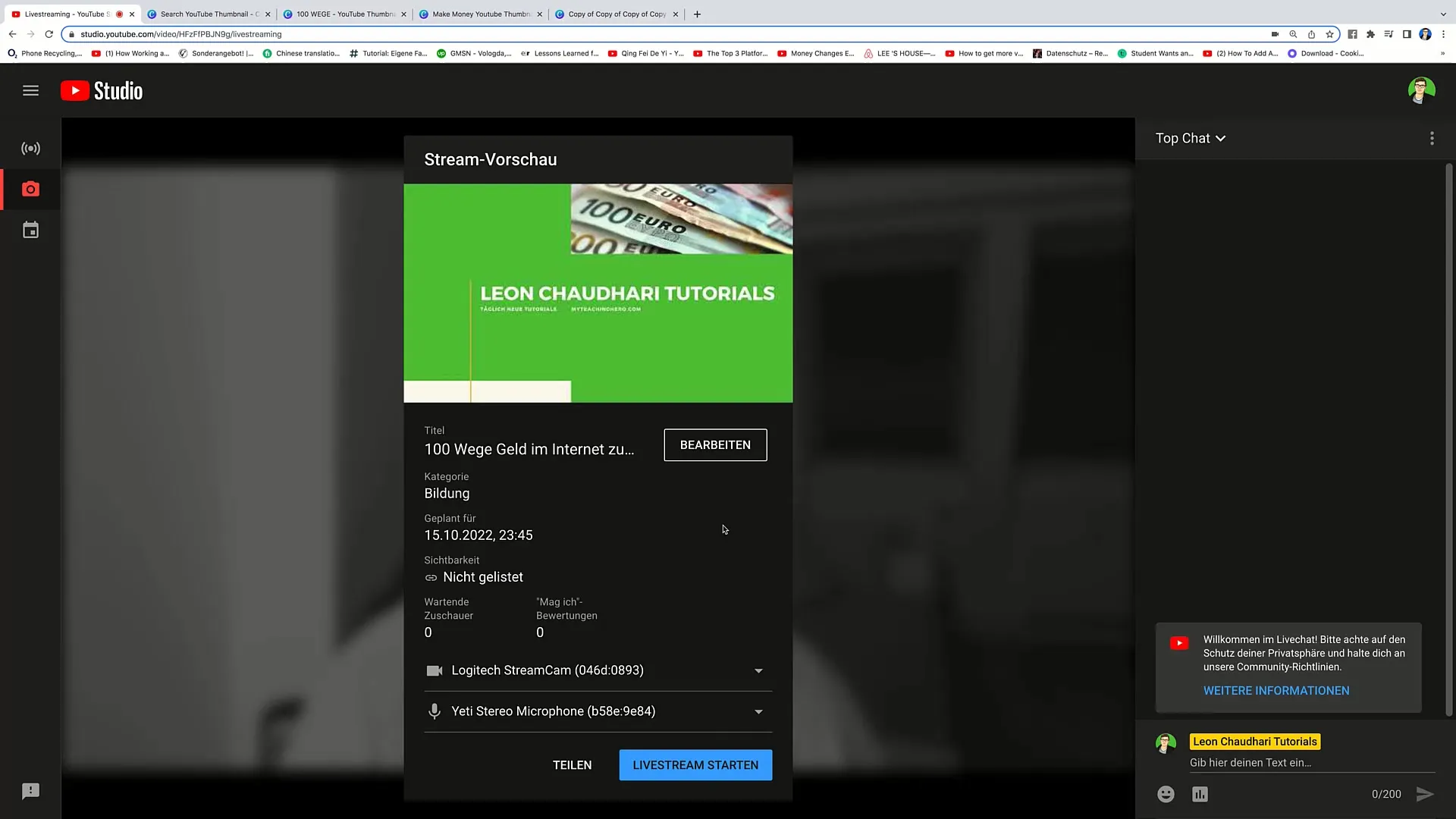
Step 9: Plan and Manage Stream
You can also schedule future streams or manage already scheduled streams. Click on the respective option and make the necessary adjustments. If needed, you can also delete your streams.
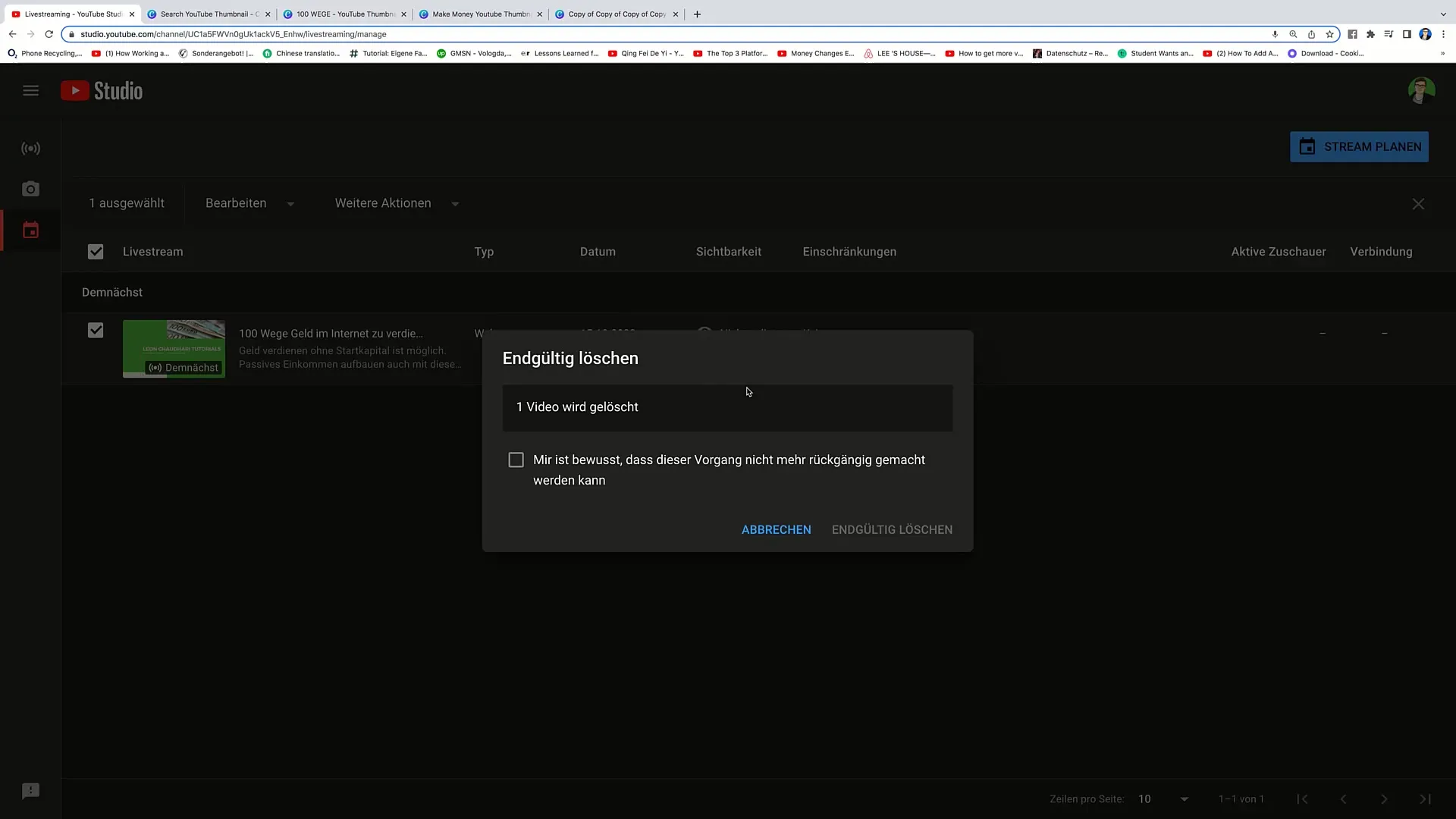
Summary
In this guide, you have learned how to set up your livestream on YouTube successfully. You have learned how important tags are, how to create a playlist, and what settings you can make for your live chat and the visibility of your stream. In planning your streams, you also receive valuable tips on reaching your audience and ensuring interaction.
Frequently Asked Questions
How important are tags for my livestream?Tags are crucial for the discoverability of your livestream and support SEO optimization.
How many characters can I use for tags?You can use up to 500 characters for tags to integrate relevant keywords.
Can I keep my livestream private?Yes, you can decide whether your livestream is private, unlisted, or public.
